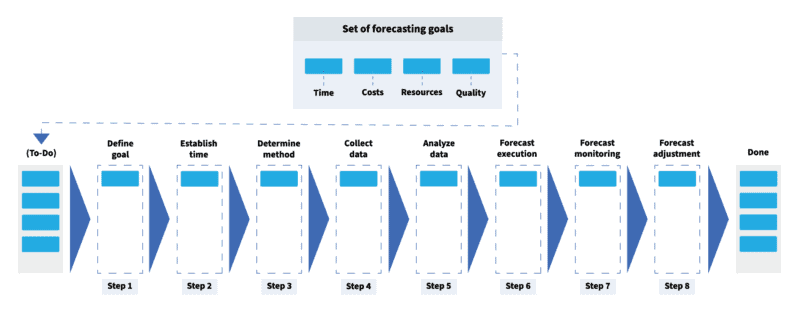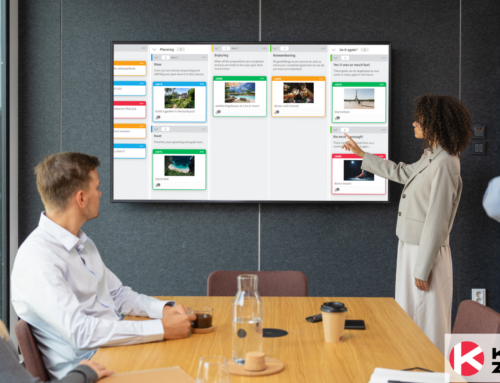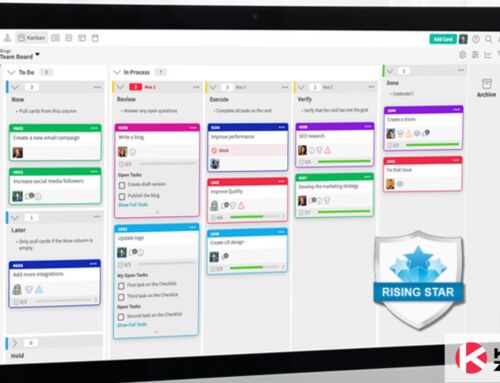
Nowadays, companies and businesses in many different fields of work constantly need to conduct projects aiming at achieving their organizational goals and strategic plans.
From a wider perspective, projects can be understood as a temporary undertaken effort to produce an exclusive result, service or product to customers. In this sense, the term “temporary” means that all projects must have a clear time duration, that is, a well-defined start and end.
In order to be considered successful, a project is often evaluated based on how well it meets its specific outcomes in terms of time, quality, scope and costs. Therefore, an important part of daily activities of project managers and team members consists of defining work expectations and updating forecasts of the project outcome.
Making project forecasts about future outcomes is tough, especially because of future-related uncertainty. In this sense, probabilistic approaches turn out to be a good alternative when it comes to setting realistic work expectations.
The issue of setting work expectations can be treated by using many different methods. Among available methods, in the Kanban method this issue is addressed through the so-called Service Level Expectation approach.
Service Level Expectation in Kanban
In the Kanban method, Service Level Expectation (SLE) is a probabilistic-based approach that allows forecasting realistic work expectations. In other words, service level expectation characterizes the overall fixed time that work items are likely to spend in a certain process.
As an example, a possible SLE statement can be mentioned as follows: “We can guarantee the client that 80% of work items will be finished in 5 days”. Alternatively, if the costs over time associated with a project are known, another possible SLE example is: “We are 90% confident that we can finish the project for under $100.000”.
SLEs allow us to obtain an idea of the inherent variability which needs to be considered when making project forecasts. This can be done by using specific Kanban metrics as shown previously in the article Set Realistic Work Expectations with Kanban.
Project Forecasting
Project forecasting can be understood as a prediction of possible project outcomes based on careful evaluation of current available information or assumptions. Predictions can be assumed as having probabilistic behavior. Over time, as the project progresses, forecasts often need to be updated and reissued.
In order to achieve success in project forecasting, it is important to keep an eye on some key aspects: a) measuring project performance regarding accomplished work items, b) continuous control of the prediction reliability, based on real information and c) recognizes and analyze conceivable relations between project changes (in performance, conditions and scope) and use this data to deduce data project outcomes.
Managing work expectations when forecasting is also very important, in order to communicate the uncertainty of the predicted project outcome. This can be done through the Kanban Service Level Expectation approach based on specific metrics as already mentioned in the previous topic.
How to Forecast Project Completion with Kanban
Forecasting project completion needs to follow a careful process aiming at yielding truthful results. In the Kanban method, this can be achieved, for example, by using specific digital Kanban boards and Service Level Expectation. Figure 1 shows an example of a digital Kanban board that can be used for the project forecasting process.

The Kanban board schematically shown in Figure 1 depicts the progress of the project forecasting process over time. At the top of the digital Kanban board, a set of possible forecasting goals regarding the project being conducted are defined in terms of time, costs, resources or quality. Next, the selected forecasting goals are linked to the “To-Do” column, thus allowing to start the project forecasting process.
In this digital Kanban board, a total of eight steps are necessary to complete the whole project forecasting process over time.
- Step 1: Define goal. The main purpose of the project forecasting must be defined, which is related to the previous set of goals mentioned. This step also aims at determining the required level of detail in the forecast as well as its necessary accuracy.
- Step 2: Establish time. Refers to the definition of a time period for the forecast. This can be, for example, a short-term period (e.g. hours, days, etc.) or even a long-term period (weeks, months, etc.).
- Step 3: Determine method. An appropriate forecasting method must be selected. It is possible to select a singular method or even a combination of existing forecasting methods. Forecasting methods can be divided into two principal groups: a) Quantitative methods and b) Qualitative methods. Quantitative methods employ data-driven analyses, whereas qualitative methods rely on subjective evaluations. Classical quantitative methods that can be used are, for instance, Trend Analysis, Time Series Analysis and What-if Scenarios. On the other hand, in the group of qualitative methods, possible alternatives are the so-called Delphi and Nominal methods.
- Step 4: Collect data. It is important to define how the required data will be measured and which type of data is relevant for the forecast.
- Step 5: Analyze data. After collecting data, the next step consists of correctly analyzing it.
- Step 6: Forecast execution. Having collected and analyzed the data, it is now possible to carry out the forecast by using an appropriate method in forecasting.
- Step 7: Forecast monitoring. To check whether the forecast performs reasonably, it has to be monitored.
- Step 8: Forecast Adjustment. Adjustments can be made if necessary.
Benefits of Project Forecasting with Kanban
Project forecasting using the Kanban method can provide many benefits for the business and the project team as well, by providing a way to identify and deal with the inherent uncertainty in projects of any kind. This can be done through the SLE concept in conjunction with digital Kanban boards capable of measuring important project metrics, such as, for example, cycle time, lead time, throughput and others.
Another benefit of project forecasting by using past and present Kanban metrics is that it allows project teams to analyze trends and report them on a regular basis, thus leading to data-driven decisions rather than rough guesses. This improves decision making by providing knowledge and insights to both project managers and project teams.
Learn to Work Smarter, Not Harder!
Get our top articles weekly.
Table Of Contents
Discover many more posts…







